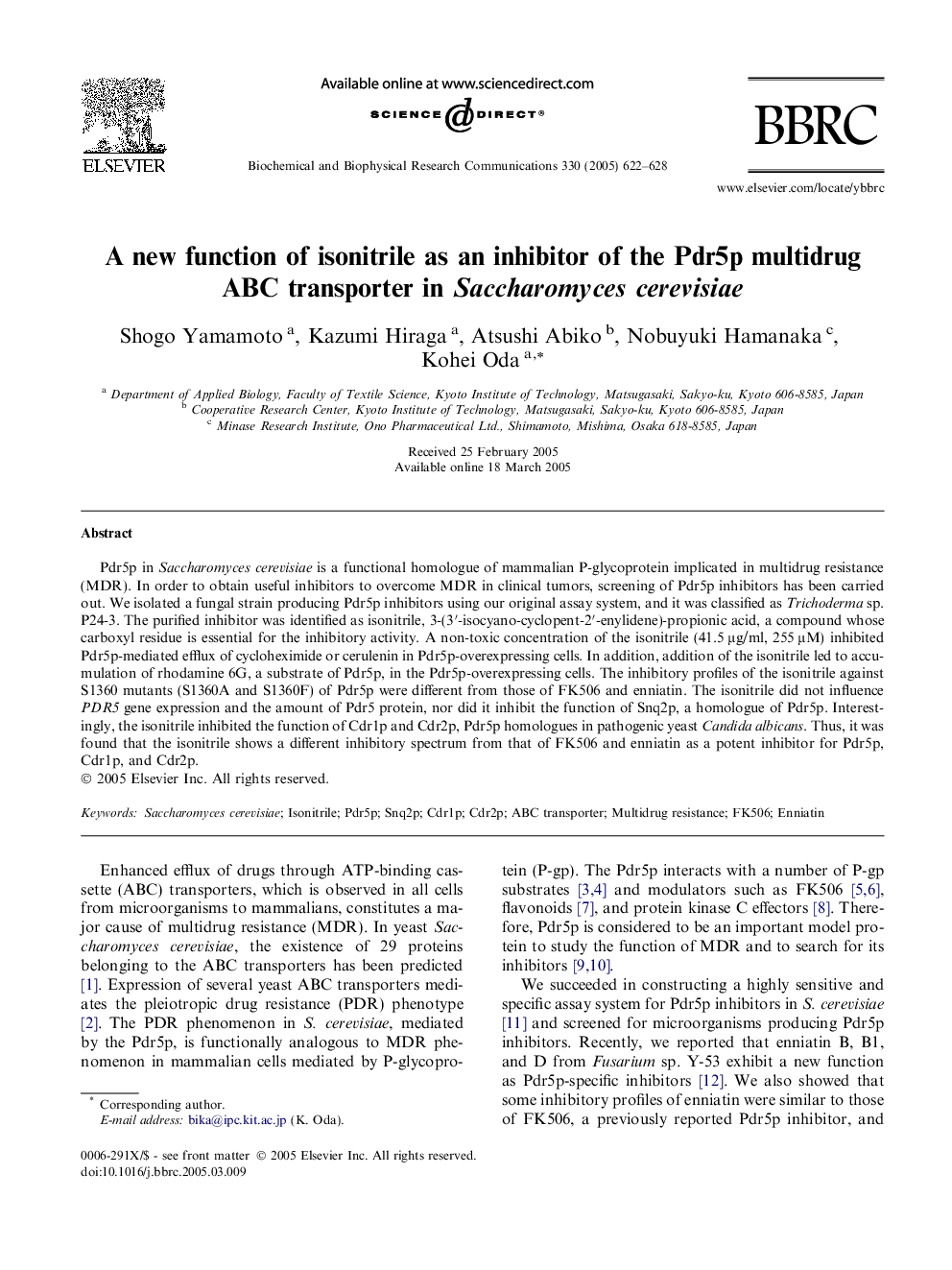| Article ID | Journal | Published Year | Pages | File Type |
|---|---|---|---|---|
| 10770157 | Biochemical and Biophysical Research Communications | 2005 | 7 Pages |
Abstract
Pdr5p in Saccharomyces cerevisiae is a functional homologue of mammalian P-glycoprotein implicated in multidrug resistance (MDR). In order to obtain useful inhibitors to overcome MDR in clinical tumors, screening of Pdr5p inhibitors has been carried out. We isolated a fungal strain producing Pdr5p inhibitors using our original assay system, and it was classified as Trichoderma sp. P24-3. The purified inhibitor was identified as isonitrile, 3-(3â²-isocyano-cyclopent-2â²-enylidene)-propionic acid, a compound whose carboxyl residue is essential for the inhibitory activity. A non-toxic concentration of the isonitrile (41.5 μg/ml, 255 μM) inhibited Pdr5p-mediated efflux of cycloheximide or cerulenin in Pdr5p-overexpressing cells. In addition, addition of the isonitrile led to accumulation of rhodamine 6G, a substrate of Pdr5p, in the Pdr5p-overexpressing cells. The inhibitory profiles of the isonitrile against S1360 mutants (S1360A and S1360F) of Pdr5p were different from those of FK506 and enniatin. The isonitrile did not influence PDR5 gene expression and the amount of Pdr5 protein, nor did it inhibit the function of Snq2p, a homologue of Pdr5p. Interestingly, the isonitrile inhibited the function of Cdr1p and Cdr2p, Pdr5p homologues in pathogenic yeast Candida albicans. Thus, it was found that the isonitrile shows a different inhibitory spectrum from that of FK506 and enniatin as a potent inhibitor for Pdr5p, Cdr1p, and Cdr2p.
Keywords
Related Topics
Life Sciences
Biochemistry, Genetics and Molecular Biology
Biochemistry
Authors
Shogo Yamamoto, Kazumi Hiraga, Atsushi Abiko, Nobuyuki Hamanaka, Kohei Oda,
